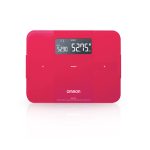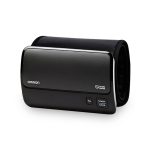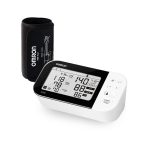The Role of BMI in Modern Fitness Tracking: Is It Still Relevant?
September 9, 2024 2024-11-26 11:01The Role of BMI in Modern Fitness Tracking: Is It Still Relevant?

The Role of BMI in Modern Fitness Tracking: Is It Still Relevant?
In today’s health-conscious world, tracking and managing fitness has become easier than ever. With numerous devices and apps available, one question that often arises is whether the Body Mass Index (BMI) is still a relevant metric in modern fitness tracking. This blog explores the role of BMI in today’s health landscape, its advantages, limitations, and how it fits into the broader context of body composition analysis.
Understanding BMI and Its Importance
BMI is a simple calculation to assess a person’s body fat based on height and weight. The BMI calculation formula is straightforward:
BMI = weight in kilograms (kg) / height in meters squared (m2)
This formula provides a single number that can be used to categorize an individual as underweight, normal weight, overweight, or obese. It’s a widely recognized metric healthcare professionals use for initial body fat assessments and overall health.
BMI calculators are available online and can be found as apps or devices such as the OMRON Body Composition Monitor. These calculators offer a quick and easy way to perform a BMI check. For those in India, a BMI calculator India provides localized measurement tools to track fitness.
The Evolution of Fitness Tracking
As technology advances, so does our understanding of body health. While BMI is a useful initial screening tool, it doesn’t provide a comprehensive picture of body health. This is where other metrics come into play.
- Body Fat Percentage: Unlike BMI, which doesn’t differentiate between muscle and fat, measuring body fat percentage gives a clearer picture of overall body composition. Higher body fat percentages can indicate various health risks, regardless of BMI.
- Body Composition: More sophisticated tools such as the body composition analysis machine and Karada Scan devices measure various metrics, including body fat percentage, muscle mass, and water content. These provide a detailed breakdown of an individual’s body composition, offering more insights than BMI alone.
- Body Mass Index Calculator: Modern BMI calculators online and devices, such as the OMRON Karada Scan, offer advanced features. They calculate BMI and provide additional metrics such as muscle mass and body fat, enhancing the overall understanding of health.
Limitations of BMI
While BMI serves as a useful tool for broad health assessments and initial screening, it does have its limitations:
- Does Not Distinguish Between Muscle and Fat: BMI cannot distinguish between muscle and fat tissue. This can be problematic for athletes or individuals with high muscle mass, as their BMI might categorize them as overweight or obese even if their body fat percentage is low.
- Does Not Account for Distribution of Fat: BMI does not provide information on where fat is distributed in the body. Visceral fat, which accumulates around organs, is more closely linked to health risks than subcutaneous fat.
- Variability Across Populations: BMI does not account for variations across different populations. For instance, it may not be as accurate for elderly individuals or those from different ethnic backgrounds.
Integrating BMI with Modern Tools
To address these limitations, incorporating other metrics with BMI can provide a more accurate health assessment. Body composition tests can offer insights into different aspects of health beyond BMI. For example, the OMRON HBF 375 electronic weighing machine provides an extensive view of body composition, including visceral fat, skeletal muscle, and resting metabolism. This body analyzer machine is ideal for families as it includes 4 user profile memories and uses 8 sensors to assess all four limbs comprehensively.
Using devices like the Karada Scan machine or body composition test options can provide a thorough analysis that complements BMI measurements. These tools help us more comprehensively understand body fat distribution and overall health.
Conclusion
BMI remains a useful tool in fitness tracking, particularly for initial health assessments. However, it is essential to recognize its limitations and complement it with additional measurements. Body composition analysis tools and devices like the OMRON HBF 375 can provide a more complete picture of an individual’s health. By integrating BMI with other metrics, individuals can achieve a more accurate and holistic view of their health and fitness.






